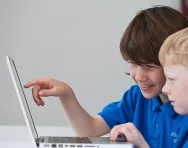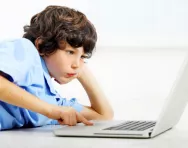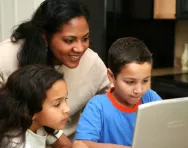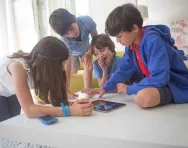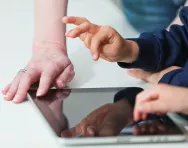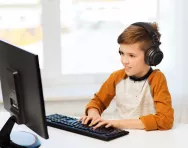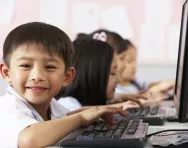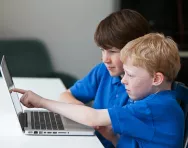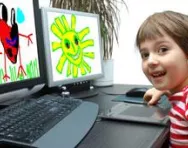Important update from TheSchoolRun
For the past 13 years, TheSchoolRun has been run by a small team of mums working from home, dedicated to providing quality educational resources to primary school parents. Unfortunately, rising supplier costs and falling revenue have made it impossible for us to continue operating, and we’ve had to make the difficult decision to close. The good news: We’ve arranged for another educational provider to take over many of our resources. These will be hosted on a new portal, where the content will be updated and expanded to support your child’s learning.
What this means for subscribers:
- Your subscription is still active, and for now, you can keep using the website as normal — just log in with your usual details to access all our articles and resources*.
- In a few months, all resources will move to the new portal. You’ll continue to have access there until your subscription ends. We’ll send you full details nearer the time.
- As a thank you for your support, we’ll also be sending you 16 primary school eBooks (worth £108.84) to download and keep.
A few changes to be aware of:
- The Learning Journey weekly email has ended, but your child’s plan will still be updated on your dashboard each Monday. Just log in to see the recommended worksheets.
- The 11+ weekly emails have now ended. We sent you all the remaining emails in the series at the end of March — please check your inbox (and spam folder) if you haven’t seen them. You can also follow the full programme here: 11+ Learning Journey.
If you have any questions, please contact us at [email protected]. Thank you for being part of our journey it’s been a privilege to support your family’s learning.
*If you need to reset your password, it will still work as usual. Please check your spam folder if the reset email doesn’t appear in your inbox.
What is the BBC micro:bit?
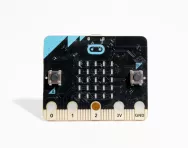
When the National Curriculum was overhauled in 2014, it made the study of computing – including computer programming, or coding – compulsory for all children in Key Stages 2, 3 and 4, with the aim of teaching them how computing can help make sense of and change the world.
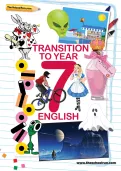
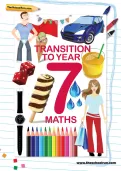
Prepare your child for Year 7
- English & Maths transition packs
- Practise journalistic writing, figurative language, persuasive text and more
- Revise key maths methods and concepts
The question was, how would teachers, many of whom had little, if any, coding experience of their own, deliver the subject – and where would schools get the resources to be able to do so?
A BBC venture provided a million Year 7 children with their own programmable device – the BBC micro:bit – to use at school and at home, with the intention of inspiring them to get into coding. But how is this piece of kit, smaller than a matchbox, going to change the way we learn to code?
What is the BBC micro:bit?
It’s a tiny programmable device for teaching coding: the language of computers. Commands written in code tell computers what to do, from making simple sounds to operating complex, multi-level computer games.
The micro:bit measures 4cm x 5cm, and has a 25-bulb LED grid; children can program these lights to come on in sequence, making designs such as smiley faces or scrolling messages. With two buttons, it can be used as a games controller, or to skip through songs on a playlist. It has a range of tones so children can compose their own music, an in-built magnet and a motion detector.
It also comes with a USB stick, Bluetooth technology to connect it to the internet, and wires that can be used to hook it up to other equipment such as motors and robots.
Children can write code on their computer, then connect their micro:bit to it so it follows their instructions. Alternatively, they can save their code to the USB stick, which plugs directly into the micro:bit.
What skills does it help children develop?
The BBC micro:bit is being given out to encourage children to get creative with coding and programming, and develop their technology skills.
‘The biggest factor in a young person’s successful knowledge acquisition is confidence,’ says Bethany Koby, CEO and co-founder of Technology Will Save Us, one of the organisations involved in the micro:bit initiative. ‘Making and creating with technology sparks confidence and imagination as well as the development of new skills.’
The micro:bit initiative is part of the BBC’s Make It Digital project, which is aiming to inspire a generation of digital pioneers. It builds on the BBC’s long history of providing computer equipment to schools: many of us had our first computing experience on a BBC Micro computer around 30 years ago. The micro:bit will now be used to give a new generation their first experience of coding.
Which children are getting them?
From March 2016, all Year 7 pupils in England and Wales, Year 8 pupils in Northern Ireland and S1 pupils in Scotland will receive a BBC micro:bit through their school. They’ll be able to use them at home, as well as in schools, and are theirs to keep.
Can younger children get them?
Once the micro:bit has been rolled out in schools, the device itself and much of its software will be open-sourced and available to buy from a number of retailers. As yet, the BBC hasn’t announced which outlets it will be available from, or how much it will cost.
What sort of projects can children do with the micro:bit?
There’s a huge range of coding projects that children can tackle with the BBC micro:bit. Some of these include:
- Making a digital watch or a flashing brooch that displays a message
- Making a fitness tracker to count their steps
- Creating an obstacle course and using the micro:bit in a balancing game
- Designing retro video games like Snake and Pong
- Using the micro:bit as a scoreboard or timer for other games
- Using it to control the music on their phone or tablet, or to compose their own tune
- Creating a digital kitchen timer
- Connecting it to a sensor that will tell them when a plant needs watering.
Children can use their imagination to use their device for a huge range of other purposes. At one school in Yorkshire, the students attached a micro:bit to a balloon and sent it on a 20-mile journey to take photos of the outskirts of space.
The BBC micro:bit package includes lots of suggestions for getting started with coding, and there are more ideas at Microbit.org.
What we thought of the BBC micro:bit
We asked 10-year-old Tom to try out the BBC micro:bit. He’d previously done some very basic coding in his Year 5 class, but this was his first attempt at using a programmable device.
‘It’s a really good way to learn to code,’ Tom says. ‘You need to have a little bit of experience, but not much. The website gives you great advice and tutorials to get you started. I’ve been using them to make the micro:bit play the Blue Peter theme tune, and have made a Rock, Paper, Scissors game.’
Meanwhile, Tom’s dad, Ian, was also impressed. ‘It’s a very simple plug-and-play device, and within minutes of picking it up for the first time, my son was using the Microsoft Block Editor on the micro:bit website to make LED pictures and display them using the buttons,’ he says. ‘The coding is simple and clear and it was easy to drag and drop the instructions onto the device. We’re looking forward to finding more challenges to solve.’
